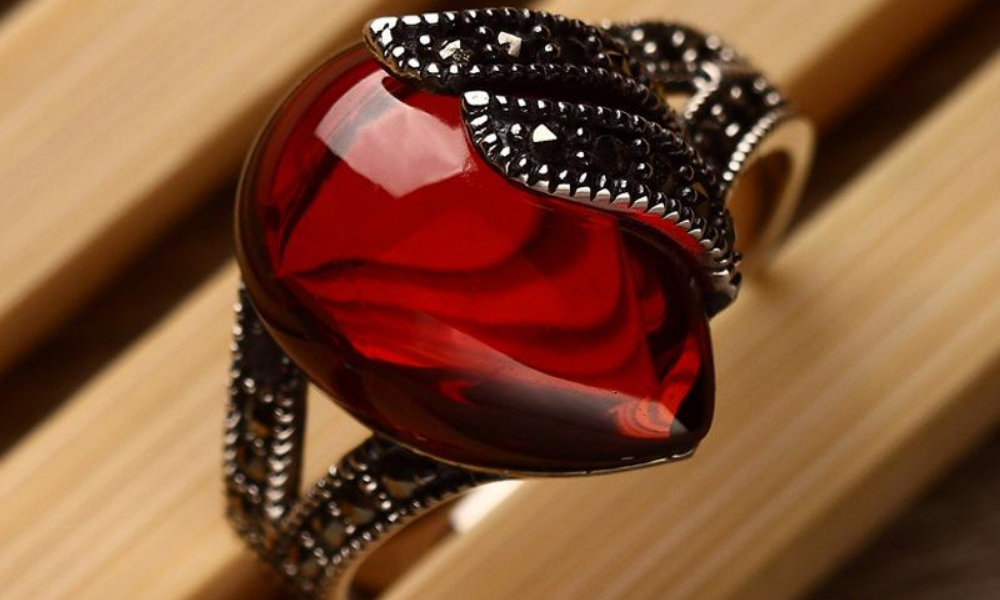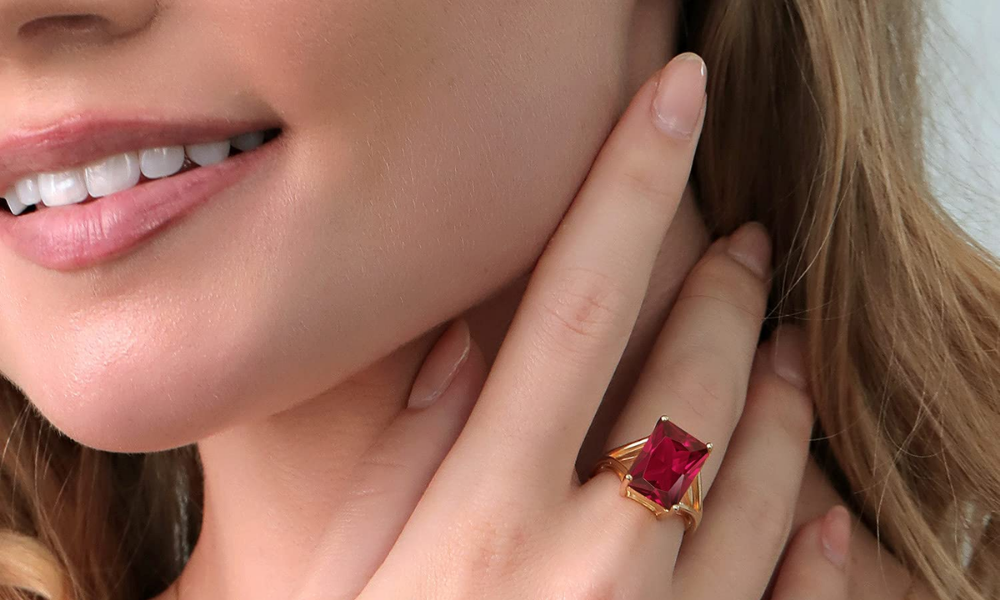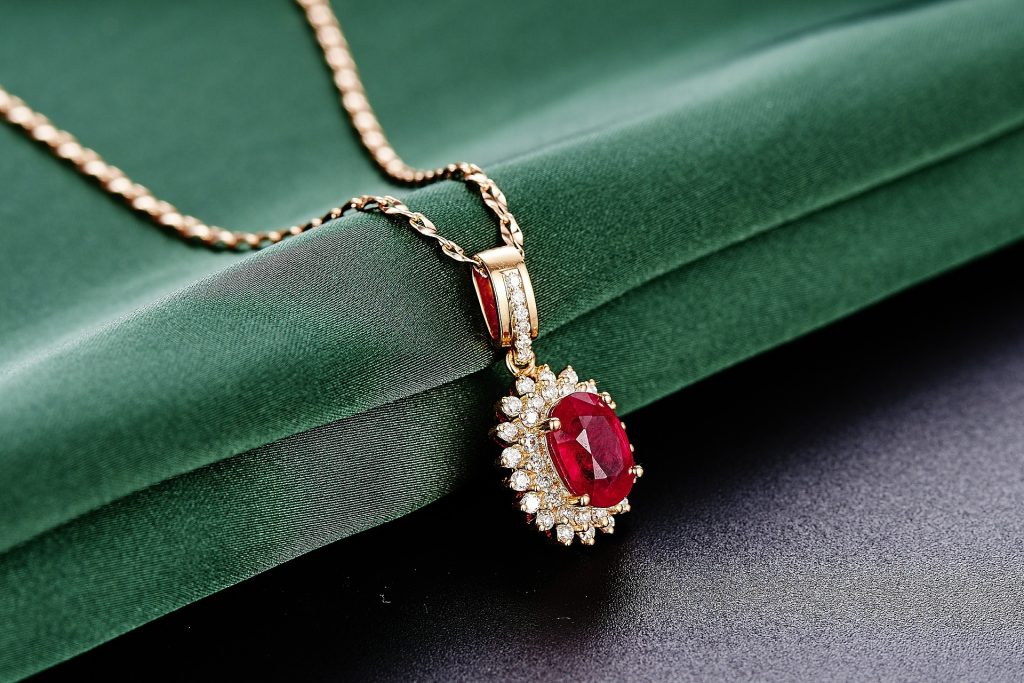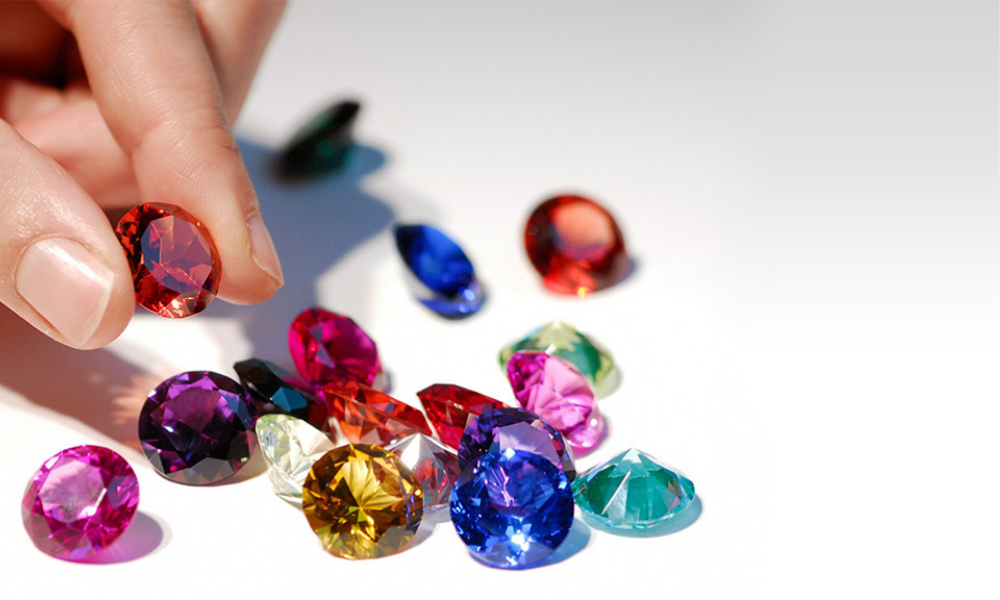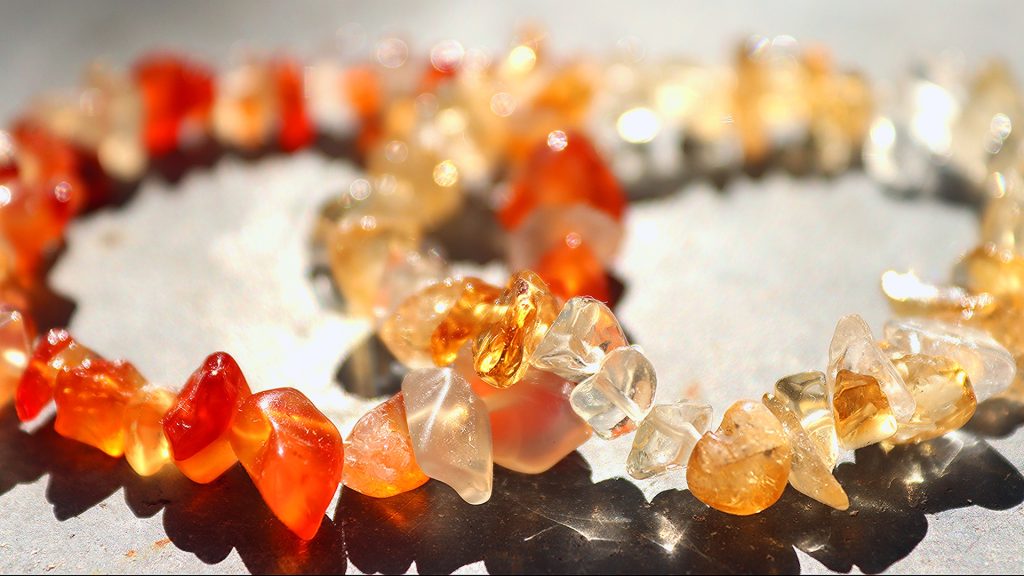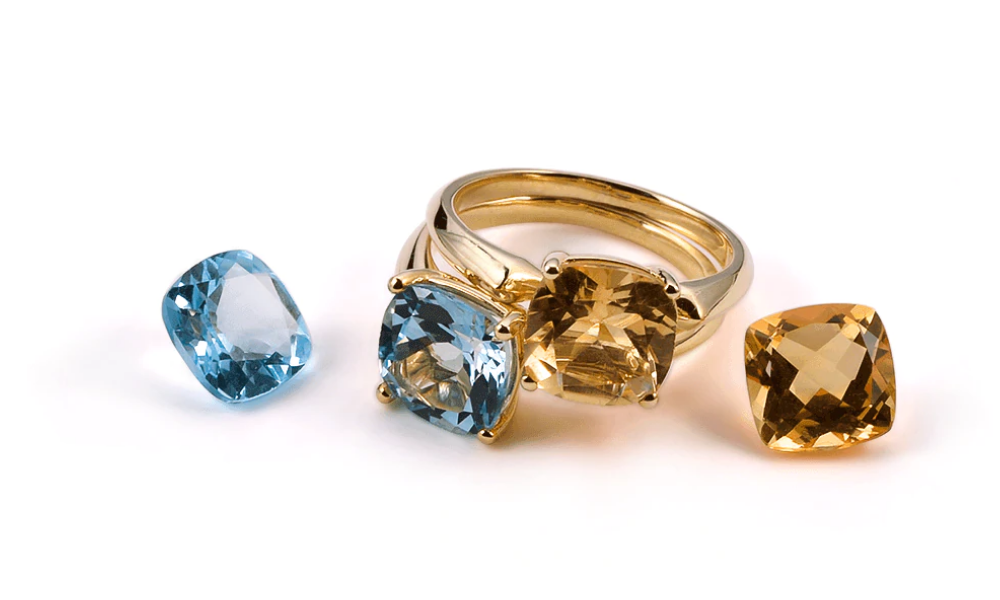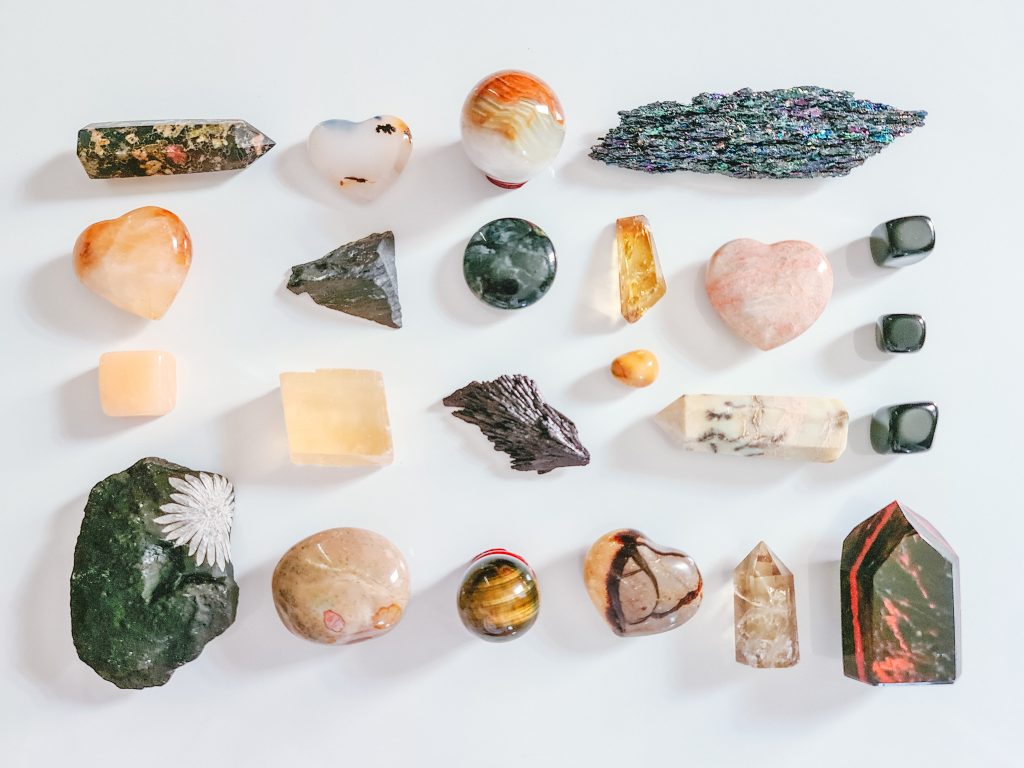Ruby is the most valuable colored gemstone, and it can attract the most excellent prices. In recent years, the per-carat values of fine-quality rubies have been steadily climbing, with many auction records being broken regularly. When it comes to higher-quality materials, even slight variations in hue can significantly impact the overall value. The price goes up even more when it comes to top-color rubies that are also free of eye-visible imperfections.
The hue of a ruby is the most important characteristic that affects its worth, aside from its color. The ruby’s primary hue is red, and it is also referred to as crimson in some circles. Rubies are known to be available in a variety of colors, including pink, purple, and orange. The greater the amount of red in ruby, the higher its value. Consider the following methods for determining the worth of an individual ruby.
What is Ruby?
Rubies are frequently connected with prosperity and fortune. Rubies were used to adorn many ancient crowns because they symbolized good fortune and bravery. The intense red color of the ruby is also associated with love, passion, and raw emotion. Rubies were once thought to contain drops of Mother Earth’s blood, according to ancient beliefs.
Ruby is considered one of the most valuable gemstones in the world, along with sapphires and emeralds. It is the birthstone for July and the stone for the 15th and 40th wedding anniversary. Like other gemstones, rubies are mined worldwide for use in jewelry, and the process is similar.
What Factors Affect the Value of Ruby?
There’s no doubting that rubies are beautiful gemstones. According to Indian tradition, rubies are considered the “king of gemstones.” They are considered the most costly and scarcest of all the natural gemstones that are blue in hue. Why? Royalty, wealth, and power have long been associated with rubies, a gemstone type. However, they are also regarded as protective stones.
Their deep red color is said to arouse romantic feelings, render the wearer invulnerable to battle wounds, and even help the wearer amass more fortune. Rubies have long been regarded as crucial in creating royal jewels for European royal dynasties. Examples include the Black Prince Ruby, who is set in the imperial crown of the United Kingdom, and the Black Princess Ruby.
Of course, there are a plethora of other exquisite rubies to be found across the world. Here are some things to think about before you buy a ruby gemstone.
The Color of Ruby
The most important factor influencing the value of a ruby is its color. The color of the most OK ruby ranges from a bright, brilliant red to somewhat purplish red. Pure red colors demand the highest prices in most marketplaces, while rubies with overtones of orange and purple are considered less valuable. For a hue to be regarded as the best quality, it must be neither too dark nor too light. Choosing a hue that is too dark will negatively impact the stone’s brilliance. Even though the color strength or intensity is exceptionally high, the stone may be mistaken for a pink sapphire if the color is too light. On the other hand, Pink sapphires have a devoted following, even though they are priced significantly more competitively than rubies. The most attractive color of ruby is ultimately the one you prefer the most.
A ruby’s color is determined by hue, saturation, and tone.
- The hue of a ruby refers to the primary color of the stone and any secondary colors that may be present. Rubies are frequently found with secondary colors such as pink, purple, and orange. It is less to have an overly orangey or purplish color. The fewer secondary colors in ruby, the more expensive it is.
- Saturation is a term that refers to the intensity of a color. Generally speaking, the more vibrant the color of your ruby is, the more it is worth in terms of money.
- The lightness or blackness of the ruby’s hue is referred to as its tone. Generally speaking, the best rubies are ones that are neither too bright nor too dark in color, as described above. Pink sapphires can be mistaken for rubies when their color is too light, while rubies too black will lack the appropriate brightness when they are too light.
Ruby Clarity
Because inclusion-free rubies are virtually impossible to get in the trade, people in the industry are used to seeing inclusions in their rubies. The value of ruby can be affected by how noticeable the inclusions are. The value of a ruby is drastically reduced if it has apparent inclusions or inclusions that diminish transparency or brilliance.
The stone’s transparency, brilliance, and value are significantly reduced if prominent and noticeable inclusions are found beneath the table facet. Inclusions can also hurt the durability of a ruby, and significant surface-reaching fractures might represent a hazard to the durability of a structure.
The presence of needles, which are thin mineral inclusions, is typical of ruby clarity features. Silk is the term used when the material is rutile and needles are present in intersecting groups in the mineral. Short needles or long and slender needles may be used, appearing to be closely intertwined together.
Besides needles of other minerals, microscopic crystals, zones of color variation, and inclusions that mimic fingerprints, rubies can contain various inclusions.
Some inclusions can enhance the appearance of a gem by favorably reflecting light. Because of the presence of rutile silk, light is scattered across facets that would otherwise be too black without it. This softens the color and distributes it more evenly around the ruby’s crown, resulting in a more pleasing appearance.
When a stone is cut with a curved upper surface, such as a cabochon cut, needles that meet can also produce the star appearance, also known as asterism, which is visible.
Ruby Cut
Various factors influence the cut and proportion of rubies available on the market. The crystal form of a ruby determines whether or not it is suitable for a particular cut. Even though the most frequent shape of ruby crystals is the flat tabular hexagonal shape, crystals from other sources can be elongated.
In addition to round and triangular rubies, emerald cut, pear cut, and marquise cut rubies are also available. However, these shapes are difficult to come by in more significant sizes and higher quality.
Ruby rough is extremely expensive, so many cutters aim to save as much weight as possible when cutting it. They can carve flattened ruby rough into shallow stones, even though light escapes through flattened pavilions, resulting in an unsightly see-through spot in the stone known as a window.
Another aspect that influences cut is pleochroism, which appears with distinct hues when the crystal is oriented in different orientations. In ruby, it often appears as a reddish-purplish red in one crystal direction and an orangey-red in the other crystal direction. Orienting the table facet perpendicular to the long crystal direction can help cutters reduce the amount of orangy-red color they produce. Although it is sometimes feasible to orient a ruby for optimal color return, it is not always possible due to the potential weight loss that would result from doing so.
Carat Weight
The world’s largest ruby, an 18,696-carat stone with a weight of around 8.2 pounds, is the largest. Even though your ruby is unlikely to be this enormous, the carat weight of your stone will still have an impact on its worth. In general, the higher the carat weight of your ruby, the more money it is worth. The price per carat climbs dramatically as the weight of the diamond increases.
Fine-quality rubies weighing more than one carat are extremely difficult to come by, while commercial-quality rubies are readily accessible in various sizes. When the size of a ruby is increased, the price per carat climbs dramatically.
Origin
The location of your ruby’s origin will also impact its pricing. Burmese rubies are generally considered to be the most valuable of all. In many cases, the provenance of your ruby can be determined by examining the inclusions in your stone; the sorts of inclusions found in rubies vary from place to region.
Treatment
A large number of rubies are treated to improve their beauty. A few of the most common treatments are heating (exposing the ruby to heat to remove purple discolorations and slight inclusions), dyeing (introducing dyes into the ruby to improve its color), fracture filling (inserting glass, wax, oil, or other materials into the ruby to improve its clarity and appearance), and diffusion (introducing elements such as beryllium into the atomic lattice of a ruby during heat treatment to improve the stone’s color and clarity). Natural, untreated rubies are the most precious, but these are becoming increasingly difficult to come by in today’s market. Rubies that have been heated are often more valuable than rubies that have been dispersed or filled.
Market Conditions
Market conditions are another essential consideration for determining the value of a ruby. When it comes to secondhand rubies, colors, and cuts that are in high demand at the time of selling will be able to command a premium on the market.
How do You Determine if a Ruby is Genuine?
Rubies are frequently forged due to their scarcity. We recommend purchasing only from a reputable ruby jewelry retailer to avoid purchasing fake rubies. The following approaches can be used to distinguish a fake ruby from a genuine one:
- Run a scratch test to see how well it works. We already discussed how the Mohs scale, which is used to evaluate the hardness of minerals, rates ruby at nine points out of ten. In most cases, if you can scratch the stone with the tip of your fingernail or a piece of sandpaper, it is not a genuine ruby.
- A streak test should be performed. Place a porcelain plate on a countertop or table and drag a ruby across it with your finger. A false ruby may leave a noticeable color streak on the plate. However, a genuine ruby will not leave any apparent color streak on the plate.
It is important to note that this test’s absence of a color streak does not necessarily indicate that ruby is genuine.
- Could you take a look at its size? Large, natural rubies are scarce and, therefore, quite valuable. If you have a ruby that appears to be a little too large for the amount you paid, there’s a good chance there was a good reason why it was so cheap.
- Could you take a look at its inclusions? Rubies are commonly found with inclusions, which is considered natural and expected; however, synthetic rubies are usually perfect and may not have any inclusions. Some imitation rubies are constructed of glass, and they may contain circular air bubble inclusions that seem like rubies.
- Consult with a professional. If you’ve purchased a ruby that you’re not sure about, or if you’ve inherited ruby jewelry, it’s preferable to consult with a gemstone expert. A skilled gemologist would be able to examine the gemstone and tell you if it is genuine or a fake in no time.
It is essential to understand that a lab-created ruby is different from an artificial ruby. Rubies made in a laboratory are chemically similar to genuine rubies, although their appearance may be slightly altered under very close inspection (for example, few or unnatural-looking inclusions).
Where do Rubies Come From?
Burma is home to some of the world’s most beautiful rubies (Myanmar). Afghanistan, Australia, Cambodia, India, Madagascar, Malawi, Mozambique, Pakistan, Sri Lanka, Tanzania, Thailand, the United States, and Vietnam are among the countries where they are mined.
Additionally, rubies can be discovered in several locales in the United States, including the town of Franklin, North Carolina. Rubies can also be found in Arizona, Arkansas, Nevada, Oregon, and Idaho, among other places.
What is the Current Value of a Ruby?
Rubies can range from as little as $1 per carat to more than $100,000 per carat, depending on the 4Cs. When the Sunrise Ruby was sold for almost a million dollars per carat at 25 carats, it was considered one of the most costly rubies ever sold.
Fine-quality rubies are among the most expensive gemstones on the market, with record prices per carat exceeding $1,000,000. The downside is that rubies are exposed to more treatments than any other gemstone.
Where Can I Sell Ruby?
There are a few popular ways to sell your ruby if you’re interested in doing so:
- The use of websites such as eBay and Craigslist to sell your ruby can be a convenient way to do so from the comfort of your own home. However, many of these websites charge exorbitant fees, and it can be pretty tricky to price your goods competitively if you do not have the necessary experience. Furthermore, selling in this manner can take a long time without the assurance of a successful transaction.
- Auction House: Auction houses are often well-versed in the sale of gemstones such as rubies, but they typically charge expensive fees, the sale can take a long time, and there is no assurance that the stone will be sold in the end. If your reserve is set too low, your item may be purchased at a discount.
- Pawn Shop: While a pawn shop can be a rapid and easy option to sell your ruby for a profit, the operators of pawn shops are unlikely to be informed about rubies and the ruby market in general. Pawning shops frequently sell your ruby to an unrelated bidder to make quick money—profits that you would have been entitled to keep if you hadn’t pawned the stone in the first place.
- Buyers specializing in online purchases – Online expert buyers such as WP Diamonds provide a quick and simple process for selling your designer ruby jewelry online. Some services take as little as 24 hours to complete. We have the experience and skills to precisely estimate your designer ruby jewelry and the financial resources to provide you with a competitive pricing structure.
Conclusion
Rubies are the most expensive colored gemstone, except for sapphires and emeralds. Some fine-quality rubies consistently set new auction-record prices at auction. Several factors determine the price of a ruby, none of which are absolute. However, slight changes in hue can significantly raise the value of a ruby. If you’re seeking a gemstone with excellent quality and good transparency, a top-grade red ruby will be devoid of inclusions that can be seen with the naked eye.

